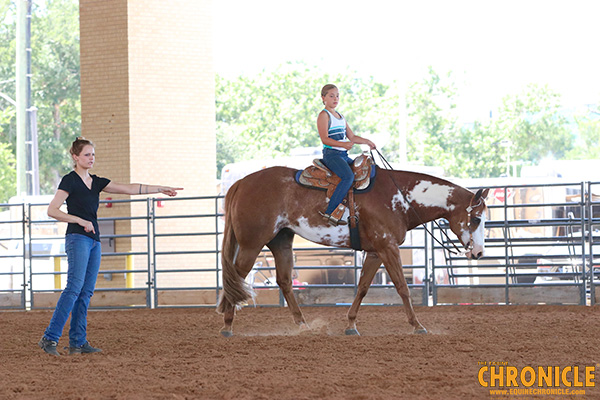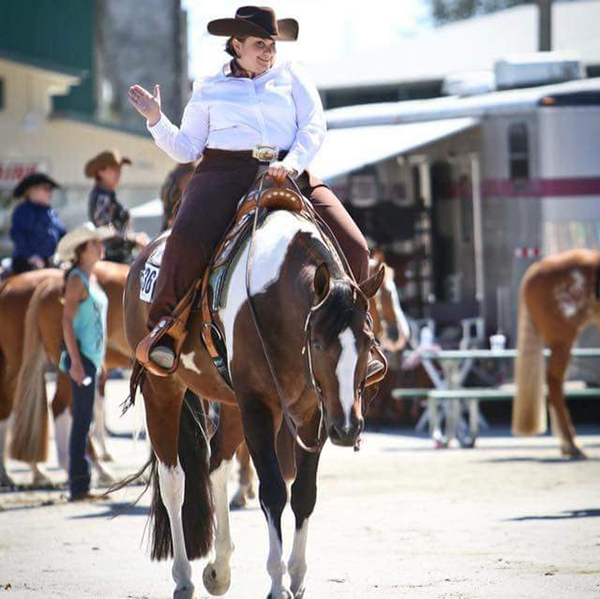How to Successfully, and Respectfully, Navigate the Warm Up Pen…
The warm up pen at any competitive equestrian event is a wild place. It is, in fact, a jungle out there, filled with exhibitors and horses of all ages, who have different levels of abilities. It is a place where communication can be enhanced, and connections made, but it’s also a place where confidence can be broken and anxiety can take over. In short, any warm up arena has a life of its own.
Different types of warm up arenas require different types of skills sets and etiquette practices. It’s a simple fact that different spaces are used very differently. The first thing that anyone, on or off a horse, needs to know and conceptualize, before they even set foot in that pen, is what the purpose of their time is; what they are trying to do, and what outcomes are most important to them and their trainer. In the words of Albert Einstein, “If one tries to navigate unknown waters, one runs the risk of shipwreck.” In the warm up arena, a shipwreck can take on many forms.
Take, for example, the regular, lunch break and the open riding that occurs at every competitive equestrian event I have ever been to. In general, the main arena has a limit for how long it will be available, so a great many people flock to get their horses into it while they can. At any given moment, during an open riding time, trainers can be seen riding while coaching students, coaching from all sides and ends of the arena, and some who even run practice patterns with clients while simultaneously coaching other students as they ride by. In addition to all of this, youth and amateur exhibitors are warming up their own horses. This my friends is the very definition of a hot mess.
The level of activity alone can create anxiety, but when you factor in the varying abilities of individual riders and horses, blood pressures can rise much like a nozzle being opened on a fire horse. I’ve had my share of struggles in the warm up arena. I’ve had complete Novice Amateur moments where I was seemingly unable to steer my horse through traffic. I’ve attempted to navigate a Trail obstacle, while unknowingly, as well as inadvertently, causing someone else to have elevated heart palpitations. I have personally, but never purposely, used my ineptitude to try to intimidate another rider or to cause them fear. Although, I’m told that it happens or has happened to others. Mistakes are proof that we’re trying, however, mistakes cannot be made at the expense of other riders, who may be more fragile than they appear.
Therefore, it’s important to have a plan before swinging your leg across the back of your trusty steed. There are also some things I have personally come to implement in my own warm up, and I hope it will help others to be more mindful of the space, within the critical element of time we are all facing.
1. Keep your eyes up while riding in a congested area. A dear friend of mine once shared that she found riding up-stream to be a better method for her. I too have found that riding against the grain of traffic helps me to be more aware of others and allows me to have a more successful warm up in heavy congestion. Riding as a salmon swimming upstream forces me to keep my eyes open and to be mindful of my surroundings.
2. Use a rotation rule for obstacle practice. When working on a Trail obstacle warm up, I try not to make more than two or three rotations of any single obstacle. Then, I get out of the way of others. Simply put, doing a drill and kill type of practice does not work for my horse, or I, and we generally only get mad at each other. Also, when you camp out on an obstacle, or fight with your horse over it for a prolonged period of time, you may have other people coming into the obstacle on top of you, or you may find your discussion with your horse spilling into another obstacle space.
3. Only ride in places where you feel comfortable. I try to stay out of places where I do not feel that I will be able to have a successful ride, or where the environment will not allow me to feel comfortable with my ride, or goals of my ride. Having a heightened sense of anxiety will only lead to difficulties and may even promote negative communication between you and the horse, or your trainer. Be honest with your support team if you do not feel confident in your abilities to navigate a specific warm up space.
4. Minimize the distractions that are within your control to minimize, by leaving them at your stall. Perhaps a busy warm up pen is not the place to pop in your ear buds and listen to music or to talk on the phone. It’s in all of our best interests to free ourselves from that which causes us to lose focus of our goals. It’s also important to consider the safety element of entering a busy place in a state of distraction and how that can have a negative impact on your ability to act in a timely manner in the event something happens that you cannot hear or see coming toward you.
In all things, I think it’s important to assume positive intent. The warm up arena is a captivating and exciting place. If something negative happens to you that upsets your personal chi, don’t assume that it was done intentionally. Perhaps, there is an oblivious Novice Amateur, much like myself, who didn’t have a plan and who was just trying her best to do what she thought her trainer was telling her to do. You see, it’s a common assumption that all riders have the competencies to handle verbal critiques, the instruction of practice, and positioning within a high traffic situation, simultaneously. My friends, if I have learned nothing over my journey, it is that the journey of a thousand miles begins with a single step.
Respectfully Yours,
Kory Kumar
If you’d like to write a blog for EquineChronicle.com, email B.Bevis@EquineChronicle.com for consideration.












